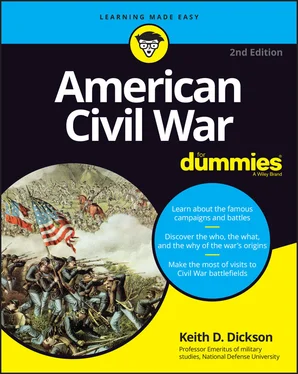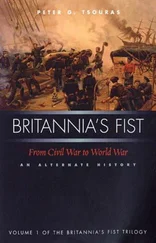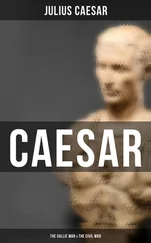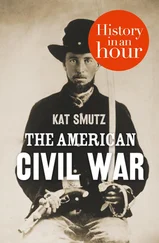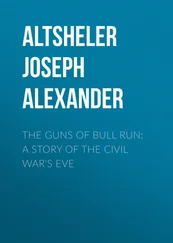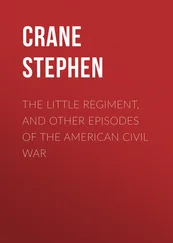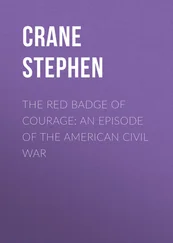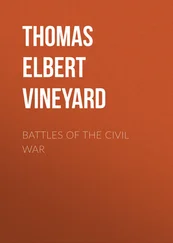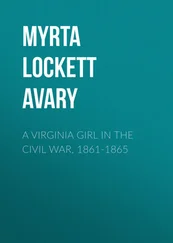Keith D. Dickson - American Civil War For Dummies
Здесь есть возможность читать онлайн «Keith D. Dickson - American Civil War For Dummies» — ознакомительный отрывок электронной книги совершенно бесплатно, а после прочтения отрывка купить полную версию. В некоторых случаях можно слушать аудио, скачать через торрент в формате fb2 и присутствует краткое содержание. Жанр: unrecognised, на английском языке. Описание произведения, (предисловие) а так же отзывы посетителей доступны на портале библиотеки ЛибКат.
- Название:American Civil War For Dummies
- Автор:
- Жанр:
- Год:неизвестен
- ISBN:нет данных
- Рейтинг книги:4 / 5. Голосов: 1
-
Избранное:Добавить в избранное
- Отзывы:
-
Ваша оценка:
- 80
- 1
- 2
- 3
- 4
- 5
American Civil War For Dummies: краткое содержание, описание и аннотация
Предлагаем к чтению аннотацию, описание, краткое содержание или предисловие (зависит от того, что написал сам автор книги «American Civil War For Dummies»). Если вы не нашли необходимую информацию о книге — напишите в комментариях, мы постараемся отыскать её.
American Civil War For Dummies,
American Civil War For Dummies
American Civil War For Dummies — читать онлайн ознакомительный отрывок
Ниже представлен текст книги, разбитый по страницам. Система сохранения места последней прочитанной страницы, позволяет с удобством читать онлайн бесплатно книгу «American Civil War For Dummies», без необходимости каждый раз заново искать на чём Вы остановились. Поставьте закладку, и сможете в любой момент перейти на страницу, на которой закончили чтение.
Интервал:
Закладка:

Waud, Alfred R / The Library of Congress / Public Domain
FIGURE 4-2:1st Virginia Cavalry.
Because of its mobility and ability to operate in small numbers that are hard to detect, cavalry also provided an invaluable service to an army commander — reconnaissance. Reconnaissance is the process of finding out about the enemy’s size, activity, location, disposition (how an army has arranged its forces), morale, equipment, and intentions (attack, defend, and retreat). If a commander can gain information about the enemy while keeping the enemy’s reconnaissance from finding out anything of value about his own forces (through screening — see the preceding paragraph), he will — if he’s any good — be able to use this information to outfight and defeat his enemy.
Providing firepower: The artillery
The artillery provided the long-reaching firepower on the battlefield. The army’s cannons (see Figure 4-3) were organized into batteries of four to six guns each. Posted behind the infantry on high spots on the battlefield, or on the flanks of the line, the artillery supported infantry attacks with fire, or fired on attacking infantry in the defense with cannons. Artillery was often massed when possible to concentrate the devastating effects of the weapons on unprotected infantry formations of the enemy. When placed behind earthworks or breastworks, and sufficiently supported by infantry, artillery made such positions impervious to attack.
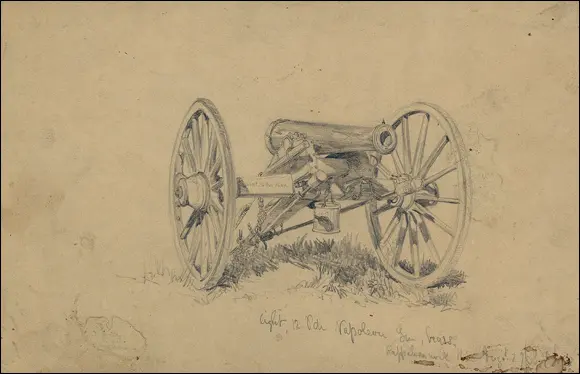
Forbes / The Library of Congress / Public Domain
FIGURE 4-3:The 12pd Napoleon — the standard artillery piece of both armies.
Fleet of foot: The infantry
Infantry units use foot marches and massed rifle fire in the attack or defense to accomplish the commander’s battle plan (see Figure 4-4). The infantry contains the bulk of an army’s combat power, because it is the decisive arm of war. Everything that has happened in war for thousands of years can be reduced to this one exquisite bit of simplicity — nothing is accomplished until soldiers on foot close in on and kill the enemy in close combat and occupy terrain. Infantry units marched to the battlefield in column, usually four soldiers abreast. Once on the battlefield and in proximity to the enemy, the column would make a flanking movement to form two lines facing the enemy. From this formation, units (usually regiments) would advance to a point where they could engage the enemy infantry effectively with massed rifle fire. While this seems simple, moving thousands of men like this took a high level of skill. The best units of the Civil War were those that had a high level of discipline based on time invested in drill, and skilled commanders who had mastered the intricacies of moving large bodies of troops over varied terrain in the face of artillery fire, gun smoke, and noise of battle.

The Library of Congress / Public Domain
FIGURE 4-4:Infantrymen of the 6th Massachusetts Volunteer Militia.
Other important branches
When people think of war, they often think only about the fighters (infantry, cavalry, and artillery). This is natural, because they are the ones who make the story exciting. In actuality, the numbers of fighters in an army are usually the minority. Most of an army is made up not of fighters, but of units whose job is to support the fighters. Modern armies — and Civil War armies are a part of modern warfare — consume enormous amounts of everything . Whether in camp or in the field, armies consume tons of food and water every day. And not just people do all this consuming, either; the tens of thousands of animals that provided mobility for the cavalry and artillery needed to be fed as well. Anyone who has ever had to feed even one horse or cow knows how much forage it takes every day to keep them happy. In battle, an army consumes ammunition at incredible rates. Also, inevitably, men are killed or wounded.
In the general mess that is war, somebody has to haul every bite of food and every bullet and cannonball fired. Somebody has to provide clothes, shoes (for horses and men), equipment, and repair or replace whatever is lost or broken. Somebody has to keep records to make sure supply stocks are maintained, so that no shortages occur. Somebody has to deal with the sick, dead, and wounded. Somebody has to house the troops when they go into camp. Somebody has to build the bridges and rail lines to supply the army. You get the idea.
Hauling food and ammo: The quartermaster
The quartermaster (or in modern terms, the logistician ) has the unromantic but all-important job of providing everything the army needs to fight. The quartermaster supervised the rail depots and the supply trains (the long line of wagons) that followed the army on the march. In the Union army, the standard was 25 wagons for every 1,000 men. The medical corps treated casualties (the sick, dead, and wounded), taking them from the battlefield, burying the dead, and evacuating the wounded or sick to the rear for treatment and (the all-too-rare) recovery.
Orders for the movement of armies and combat information were passed through the signal troops , who maintained the critical lines of communications for the army. In the Civil War these troops used signal flags, mirrors, torches, balloons, couriers (messengers), and the telegraph to pass orders and instructions. Throughout the war, both sides established a highly organized communications system that went from the national leaders to the armies in the field and down to the company level — and back up again. For the first time in the history of war, the telegraph became an indispensable means of almost instantaneous communications. It allowed presidents Davis and Lincoln an unprecedented opportunity to maintain contact with generals in the field. The telegraph also allowed them at times to meddle in their generals’ affairs. The armchair strategists in Richmond and Washington also enjoyed using the telegraph to provide field generals with commentary and criticism. Civil War leaders were the first to discover what people today know all too well: Communications technology can be both a blessing and a curse.
Mastering the terrain: The engineers
Engineers planned and built fortifications (both temporary and permanent), built roads and bridges (both temporary and permanent), and made terrain maps (probably temporary and permanent, too). As the war went on, the skills of engineers became of increasing importance when both armies began to use entrenchments and breastworks, using sandbags and logs covered with earth to protect their forces while having a clear shot at the attacking enemy. Both Richmond and Washington were protected by extensive fortifications.
Building a Basic Civil War Army Structure: The Regiment
The basic building block of the Civil War army was the regiment . The regiment had 10 companies of 100 men each for an official strength of 1,000. A colonel commanded the regiment. A lieutenant colonel (second in command), a major (third in command), and a small staff (which took care of the administrative needs of the regiment) assisted the colonel. Four regiments formed a brigade , commanded by a brigadier (obviously) general . This makes an official total of 4,000 men. Three brigades made up a division , commanded by either a brigadier or major (not so obviously) general . This makes an official total of 12,000 men. Three divisions made up a corps (pronounced “core”), commanded by a major general (if a Union division) or a lieutenant general (if a Confederate division). This works out to an official total of 36,000 men. See Table 4-1for a comprehensive reference of army structure. See Table 4-2for army hierarchy.
Читать дальшеИнтервал:
Закладка:
Похожие книги на «American Civil War For Dummies»
Представляем Вашему вниманию похожие книги на «American Civil War For Dummies» списком для выбора. Мы отобрали схожую по названию и смыслу литературу в надежде предоставить читателям больше вариантов отыскать новые, интересные, ещё непрочитанные произведения.
Обсуждение, отзывы о книге «American Civil War For Dummies» и просто собственные мнения читателей. Оставьте ваши комментарии, напишите, что Вы думаете о произведении, его смысле или главных героях. Укажите что конкретно понравилось, а что нет, и почему Вы так считаете.
